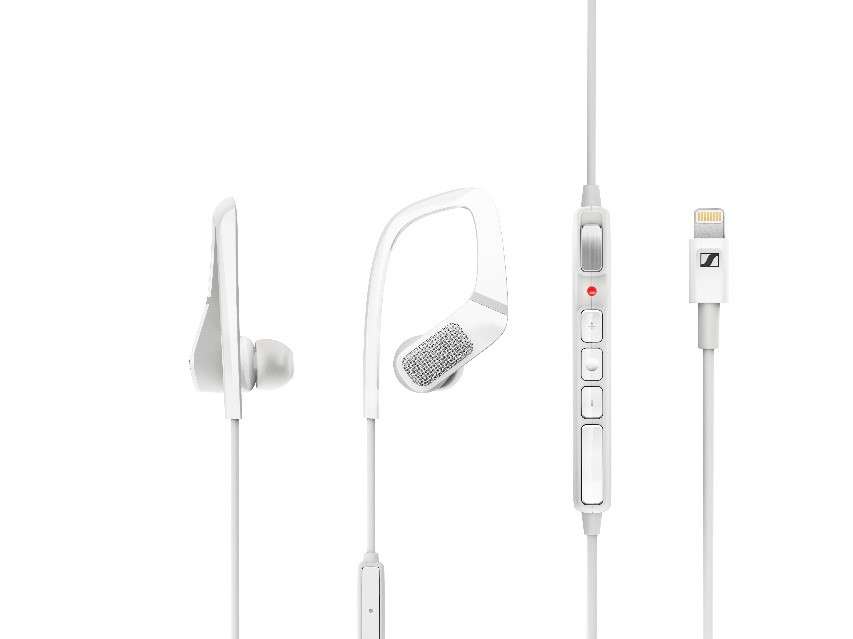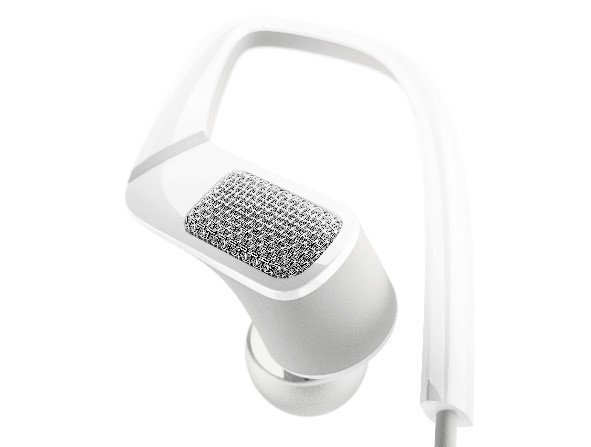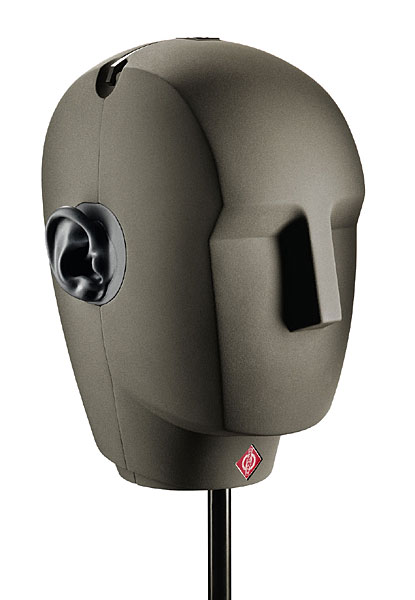Tools for Learning 3D Audio: The Sennheiser AMBEO Smart Headset
Feeling ambivalent about ambisonics? Insecure about immersive audio?
Audio professionals who haven’t dipped their toes into 3D sound should consider getting started. Virtual reality (VR) experiences, video games and soundstages are putting together microphones, headsets and speakers to achieve increasingly realistic results. And the economic impact is on the way: Reuters reports that the VR market alone could surpass $40 billion in 2020.
Meanwhile, digital distributors are on the hunt for fresh content of all varieties. The likes of Google, Facebook (which acquired VR headset makers Oculus for $2 billion in 2014), Netflix, Hulu, Amazon and more must stay ahead of the curve while satisfying the masses – they’re often convincing big brands to sponsor content, and immersive media offerings will be increasingly essential.
If this sounds tantalizing, but you still consider yourself a beginner, tech like the Sennheiser AMBEO Smart Headset can ease the transition. A compact, mobile binaural recording headset, it’s a $299.95 USD unit that makes it easy for pros and emerging content creators alike to dive into 3D stereo sound. Once they’ve captured it to their device (iOS only for now), they can take it back to HQ and mix to their heart’s content on tools like Facebook’s Spatial Workstation (Mac or Windows) or G’Audio Works (Mac only) – both free suites.
Microphone and headphone experts Sennheiser are one of the many hardware developers positioned to equip the legions of rising 3D content creators, along with upstarts like Hooke Audio, Bacch Audio, Sonic Presence and more all in the mix. The AMBEO headset is a multifaceted 3D sound microphone — it captures three-dimensional audio recordings by via two omni-directional microphones that are integrated in the earpieces. An Apogee A/D converter, mic preamp and SoftLimit technology are also within it.
The two earpiece microphones are spaced at binaural width by the listener’s head, which captures the subtle differences in timing, volume and timbre that occur as sounds from different directions reach each ear. When the recorded audio is played back on any pair of headphones, it simulates the way sounds are heard naturally by the ears, ideally resulting in a lifelike audio experience that places the listener directly within the captured sound field. Urban settings, wildlife, live concerts, skate parks, the ocean, parasailing, and anything else one can imagine can be recorded with headsets like the AMBEO. The audio can easily be accompanied by HD video shot with the same device, or as part of a fast-moving production squad armed with GoPro cameras (experience examples of the headset at work here).
On the monitoring side of the equation, Sennheiser’s AMBEO smart headset also features a Situational Awareness control that lets users choose the level of ambient noise they want to perceive. Using the headset’s rocker switch, users can either select the Transparent Hearing feature which makes the ambient noise fade into their personal program (keeping them safe in traffic, for example), or deploy the active noise cancellation to listen sans distractions.
One key way Sennheiser gets intimate with audio solutions like the AMBEO is through its development team. Sebastian Chafe is Strategic Innovation Manager for the company, leading the way through it’s Strategic Innovation Center. Originally opened in 2006 as Sennheiser Research Lab in Palo Alto, the center relocated to its current San Francisco home at the start of 2012. The goal: Create disruptive product concepts, and keep Sennheiser in close contact with potential Silicon Valley partners. Spatial audio, speech processing, and audio control sensors are all in focus.
In this interview with SonicScoop, Chafe explained how the AMBEO Smart Headset emerged from the Strategic Innovation Center and into the 3D audio marketplace.
How do you choose which areas of audio you’re going to focus on? How is the center set up to help you develop new products and solutions in these areas?
We cultivate a deep understanding of our customers and their changing technical and social environments, seeking out areas where we uncover unaddressed or emerging user needs.
Our team brings together a diverse set of innovative expertise, from user research to hardware design and software engineering, enabling us to dive deep within our users’ worlds and rapidly create, test and iterate radical solutions to the needs we discover while pushing the boundaries of both imagination and technical possibility.
Why do you personally enjoy immersive media experiences? What do you look to get out of them — visually, aurally and physically?
I’m fascinated by sensations I’ve experienced listening to immersive audio – the feeling of being present in a venue on the other side of the world, of hearing a person walking behind you that isn’t actually there, or of being completely enveloped within a piece of music.
Giving artists the power to place you within a synthetic world of their creation or transport you to a faraway moment you would have never otherwise experienced is a profound transformation of aesthetic experience.
When did immersive/3D sound become a focus of R&D for Sennheiser? What are the various forces that are enabling the adoption — and improvement — of 3D sound products for the professional and consumer marketplaces?
Sennheiser and Neumann have a long history of groundbreaking innovation in immersive audio – our Neumann KU 80 binaural microphone was released in 1973. Just over a decade ago, we saw a number of new developments converging that would enable us to bring new immersive audio experiences to audiences on a massive scale: increasing headphone ownership, powerful mobile computing, and Internet-based content distribution.
We always put our users at the center of our design process. Deeply understanding their needs and motivations enables us to craft breakthrough technologies which empower our users in their own environment and aspirations. We give users early prototypes to test in the field, working with them to iterate a design until we’re convinced it perfectly meets their needs.
Tell me about the specific requirements you developed for the Ambeo Smart Headset? What parameters did you decide it had to meet in terms of form factor, construction, performance, controls, device compatibility, price, and other considerations?
The AMBEO Smart Headset was designed around a single idea: to allow users to easily capture transportive immersive audio on a mobile device, to record sound which would make their viewer or listener feel as if they were actually there. The rugged, flexible construction is designed to withstand the most demanding environments, maintain wearing comfort and stability, and minimize structure-borne noise.
In addition, we built in innovative playback features enabling users to choose between Situational Awareness, which blends the sounds of their environment with audio playback, and active noise cancellation, which minimizes environmental sound.
What were some of the surprises you and your team experienced along the way as you developed the Smart Headset? How did you solve some of those problems?
My team is involved at the earliest stages of product development: needfinding, prototyping, user testing and storytelling. The very first prototype I built to test the concept wasn’t designed to handle wind such as you would encounter while riding a bicycle, or the high sound pressure levels that you encounter when recording a live concert.
We test our early prototypes in these environments to expose design requirements at the beginning of the development process. Balancing acoustic requirements of binaural recording and Situational Awareness with active noise cancellation and industrial design considerations is challenging – the development team in Germany did incredible work perfecting the design to perform flawlessly in each mode.
Hitting the Marketplace – Prosumer to Professional
How would you characterize the product that is being initially launched? Who do you expect it will appeal to, and what are the uses you expect to see early on?

The complete unit, including Apogee A/D converter, mic preamp plus Soft Limit for digital clipping prevention.
The AMBEO Smart Headset was designed around a single idea: to allow users to easily capture transportive immersive audio on a mobile device, to record sound which would make their viewer or listener feel as if they were actually there. Anyone wanting to record sensational audio when capturing a video with an iPhone or iPad will be interested, whether for YouTube, Facebook Video, mobile journalism, livestreaming, or just to share a moment with a friend.
Anytime you’d like to easily record a video which makes your viewer feel that they are there with you, the Ambeo Smart Headset is the way to capture immersive audio on your iOS device.
Finally, why does the development of new solutions for content creators matter? In other words, why are new audio solutions particularly important in storytelling — how can they transform and advance the craft?
Sound is deeply important to the way we experience the world. The ability to capture, craft and reshape it gives creators a profound power to tell stories in an impactful way.
At Sennheiser, we understand that immersive audio, sound experiences which reproduce or create from imagination the way we experience sound in physical space, will deeply transform and strengthen that creative and emotional impact.
— David Weiss
Please note: When you buy products through links on this page, we may earn an affiliate commission.








